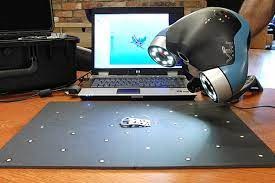Introduction
The world of digital design and fabrication has seen a revolution with the advent of 3D makers. These ingenious devices have empowered individuals and professionals alike to turn their wildest ideas into tangible objects. In this article, we will explore the realm of 3D makers, their capabilities, and how they have become a catalyst for innovation and creativity.
- Understanding 3D Makers
At its core, a 3D maker is a device that uses additive manufacturing technology, commonly known as 3D printing, to create three-dimensional objects from digital design files. Here's how it works:
- Digital Design: The process begins with the creation of a digital 3D model using computer-aided design (CAD) software or by downloading pre-made designs from online repositories.
- Slicing: The digital 3D model is then sliced into thin horizontal layers using specialized software. This sliced model serves as a blueprint for the 3D maker.
- Printing: The 3D maker interprets the sliced design and adds material layer by layer, fusing them together to create a physical object. This additive process allows for the precise construction of intricate shapes and structures.
- Capabilities of 3D Makers
3D makers come in various forms and sizes, catering to a wide range of applications and budgets. Here are some of their key capabilities:
- Versatility: 3D makers can produce an astonishing array of objects, from simple prototypes and household items to complex engineering components and artistic creations.
- Materials: The choice of materials has expanded beyond traditional plastics to include metals, ceramics, composites, and even biological materials. This versatility allows for the creation of functional parts and customized objects.
- Customization: 3D makers excel in customization. They enable users to tailor objects to their unique preferences and needs, making them a valuable tool in industries such as healthcare (e.g., customized prosthetics) and fashion (e.g., personalized accessories).
- Rapid Prototyping: Designers and engineers use 3D makers for rapid prototyping, allowing them to test and refine concepts quickly, reducing time-to-market for new products.
- Education and Learning: 3D makers are increasingly used in educational settings to teach students about design, engineering, and problem-solving. They provide hands-on learning experiences and foster creativity.
III. Applications and Industries
The versatility of 3D makers has led to their adoption across a wide range of industries:
- Manufacturing: Industries such as aerospace, automotive, and electronics use 3D makers for producing prototypes, spare parts, and even end-use components.
- Healthcare: 3D makers are transforming healthcare by creating custom implants, prosthetics, dental appliances, and patient-specific surgical guides.
- Art and Design: Artists and designers are pushing the boundaries of creativity with 3D makers, producing intricate sculptures, jewelry, and functional art pieces.
- Education: Schools and universities use 3D makers to teach students about STEM (science, technology, engineering, and mathematics) concepts and encourage innovation.
- DIY and Maker Community: Enthusiasts and hobbyists have embraced 3D makers to create everything from board games to home decor items.
- The Future of 3D Makers
As technology continues to advance, 3D makers are poised for exciting developments:
- Improved Materials: The development of new materials will expand the possibilities for 3D makers, allowing for greater strength, flexibility, and functionality.
- Faster Printing: Advances in printing technology will lead to faster print speeds and increased efficiency.
- Sustainability: The industry is actively exploring sustainable materials and recycling solutions to reduce environmental impact.
- Integration with AI: Artificial intelligence will enhance the capabilities of 3D makers, from automatic error correction to generating designs based on user preferences.
Conclusion
3D makers have ushered in a new era of creativity and innovation. These remarkable devices empower individuals and industries to bring their ideas to life, offering endless possibilities for customization and rapid prototyping. As technology continues to evolve and the capabilities of 3D makers expand, we can anticipate a future where the only limit to what can be created is the bounds of human imagination. Whether in the realms of art, healthcare, education, or industry, 3D makers are a testament to the power of technology to transform our world.


No comments yet